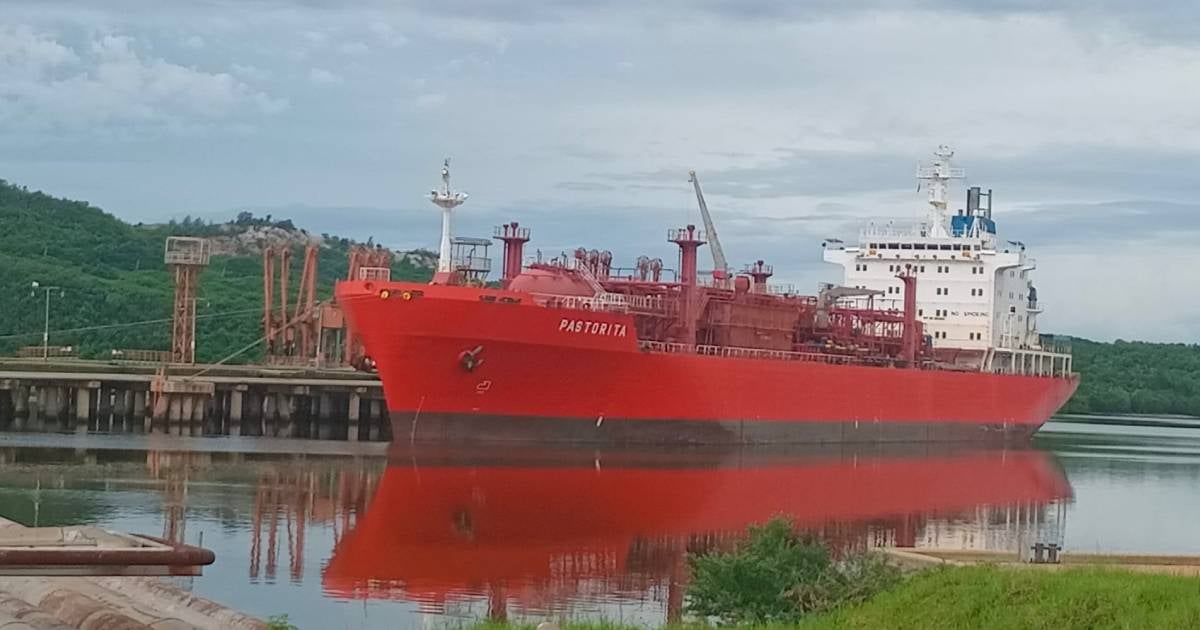
The Cuban regime confirmed that starting this Friday, the distribution of liquefied gas would resume in the eastern part of the country following the unloading of a tanker that docked on Thursday at the international pier of the Hermanos Díaz Refinery in Santiago de Cuba.
The fuel unloading began immediately, according to the Ministry of Energy and Mines, and distribution is set to start this Friday.
"Today, the partial unloading of the ship began in Santiago de Cuba and continues toward the west. Starting tomorrow, distribution will commence in the eastern part of the country," said the entity in a post on X.
The arrival of this shipment takes place against a backdrop of acute shortages of LPG, which is essential for cooking in Cuban households, especially as power outages prevent residents from using electric pots introduced during Fidel Castro's so-called energy revolution.
In recent weeks, the population has faced long lines and tensions due to a lack of resources, compounded by prolonged power outages affecting the entire country.
The governor of Santiago de Cuba, Manuel Falcón, had previously called for calm, promising a gradual solution for the 271,000 clients in the province.
However, his statements sparked discontent among certain sectors of the population, who described everyday difficulties as "unsustainable."
The shortage of LPG and interruptions in the electricity supply have led many families to turn to alternative methods, such as wood or charcoal stoves, while sales of charcoal cookers are experiencing a resurgence on social media.
This situation recalls the difficulties of the "Special Period" in the 1990s, now exacerbated by the current economic context.
Amid the crisis, the Cuban government is also facing scrutiny over delays in fuel unloading due to financial difficulties in meeting payments to international suppliers. These efforts have only resulted in partial unloadings, indicating a temporary solution.
Frequently asked questions about liquefied gas distribution in Cuba.
Why had the distribution of liquefied gas stopped in Cuba?
The distribution of liquefied gas had come to a halt due to financial issues affecting payments to international suppliers, resulting in partial deliveries of the fuel. This situation caused a severe shortage of this essential resource for cooking, particularly in the context of prolonged power outages.
How does the scarcity of liquefied gas affect Cuban households?
The shortage of liquefied gas severely affects Cuban households, as it is essential for cooking. Families have had to resort to alternative methods such as wood or charcoal stoves due to the lack of LPG and power outages that prevent the use of electric pots.
What measures has the Cuban government taken in response to the shortage of liquefied gas?
The Cuban government has facilitated the arrival of a gas tanker to resume the distribution of liquefied gas. Authorities promised a gradual solution for those affected, beginning with the partial unloading of the ship in Santiago de Cuba and distributing the LPG in the eastern part of the country.
What do citizens think about the current situation of liquefied gas in Cuba?
Many citizens have expressed discontent and frustration over the daily challenges they deem "unsustainable." Long lines and tensions have characterized the daily lives of the population, which also faces the difficulties of a complicated economic context.
What alternatives have Cubans found in response to the lack of liquefied gas?
Due to the shortage of liquefied gas, many Cubans have turned to wood or charcoal stoves for cooking. The sale of charcoal stoves has surged on social media as an alternative, although the prices of these products have significantly increased, reflecting the energy crisis facing the country.
Filed under: